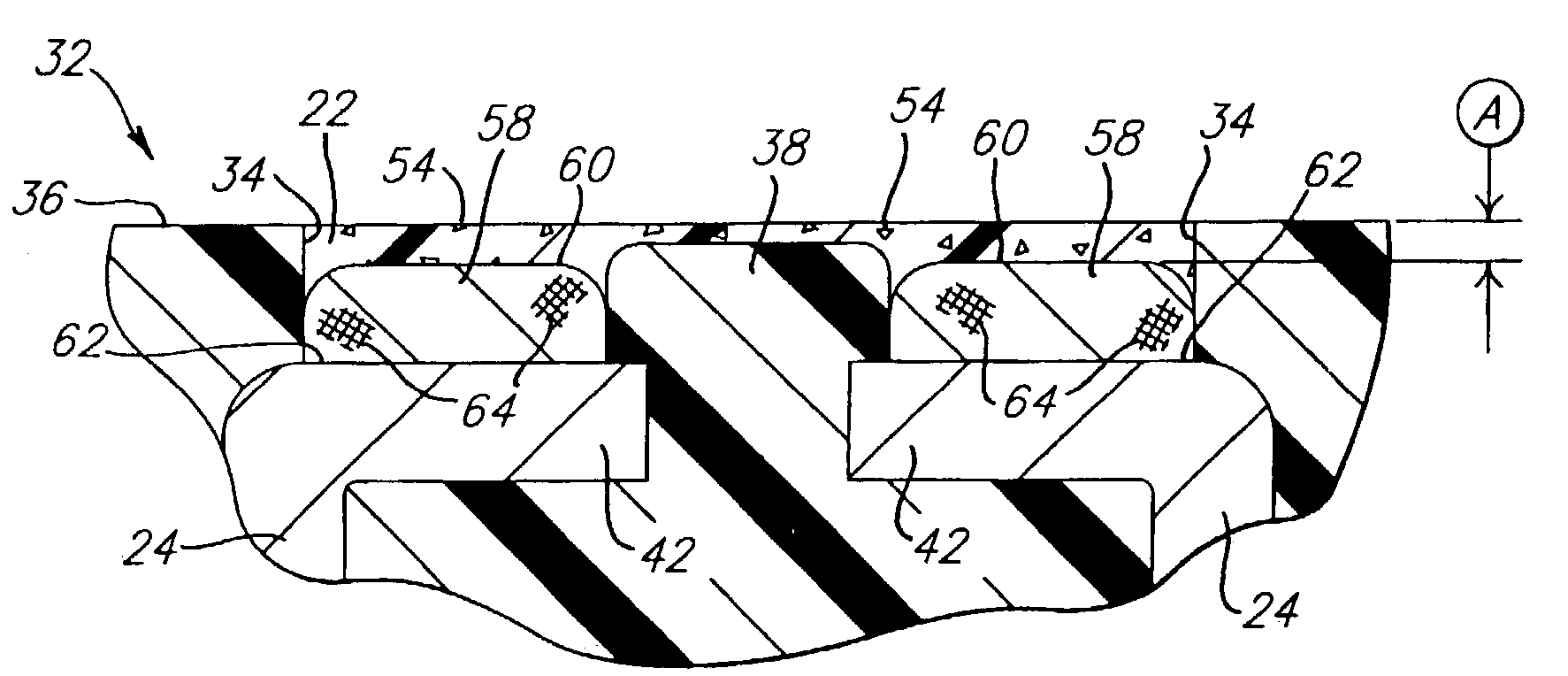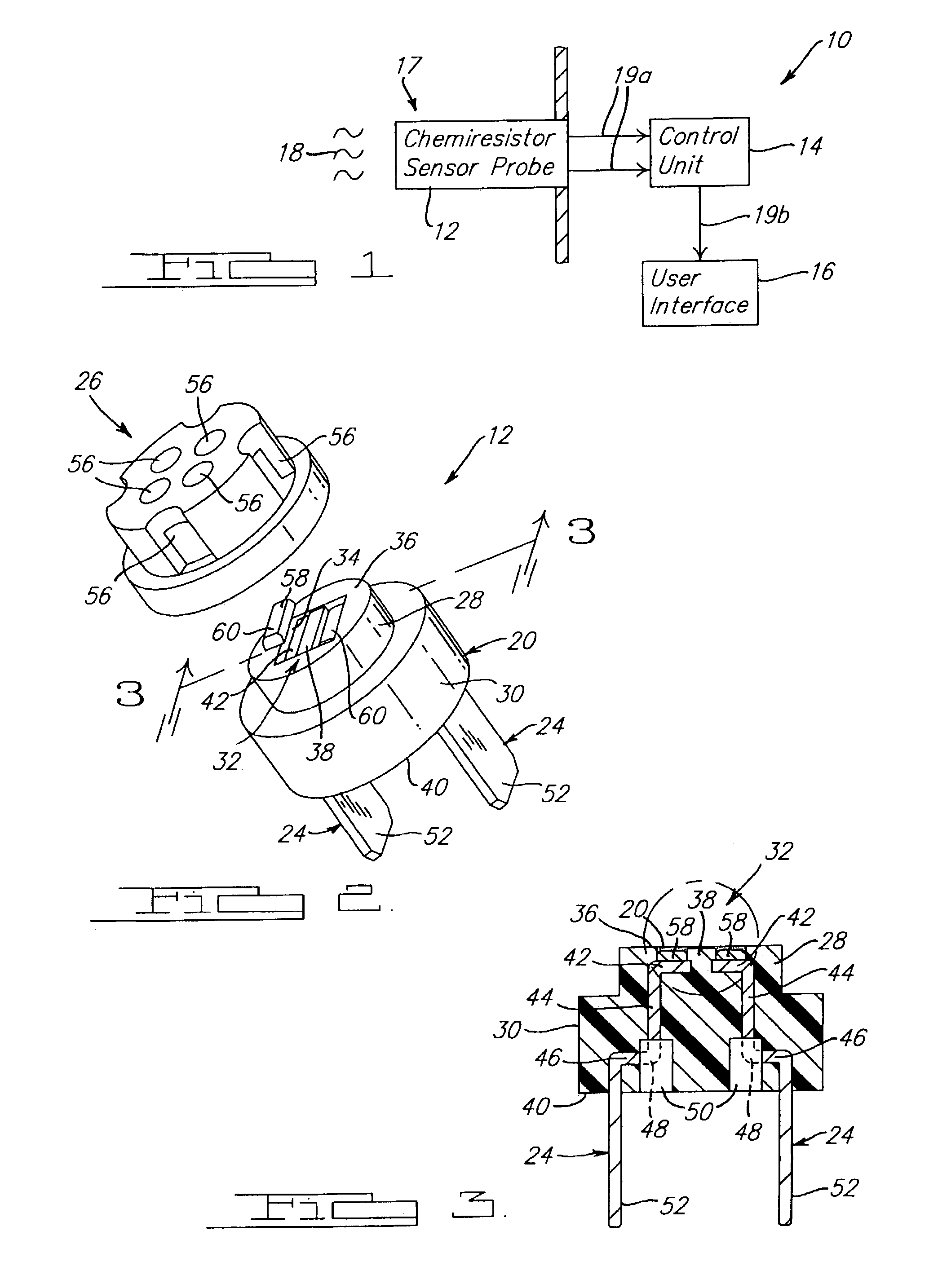Robust chemiresistor sensor
a chemiresistor sensor and robust technology, applied in the direction of diaphragms, immobilised enzymes, cells, etc., can solve the problems of reducing sensor performance, film to gradually separate from the terminal, and volumetric change of film
- Summary
- Abstract
- Description
- Claims
- Application Information
AI Technical Summary
Benefits of technology
Problems solved by technology
Method used
Image
Examples
Embodiment Construction
[0020]The following description of the preferred embodiments is merely exemplary in nature and is in no way intended to limit the invention, its application, or uses.
[0021]FIG. 1 generally depicts the major components of an exemplary chemiresistor sensor at 10. The sensor 10 is generally comprised of a chemiresistor sensor probe 12, a control unit 14, and a user interface 16. The sensor probe 12 interacts with an external environment 17 to detect the presence of analytes, or target chemical compositions 18. The sensor probe 12 generates a raw output signal 19a based on continuous detection of analytes 18 in the external environment 17. The raw output signal 19a is processed by the control unit 14. The control unit 14 transmits a calculated output signal 19b to the user interface 16 to relay analysis of the raw output signal 19a from the sensor probe 12. The user interface 16 provides information to an external user about the sensor 10 and may range from a simple alarm signal to a co...
PUM
| Property | Measurement | Unit |
|---|---|---|
| conductive | aaaaa | aaaaa |
| resistance | aaaaa | aaaaa |
| thickness | aaaaa | aaaaa |
Abstract
Description
Claims
Application Information
 Login to View More
Login to View More - R&D
- Intellectual Property
- Life Sciences
- Materials
- Tech Scout
- Unparalleled Data Quality
- Higher Quality Content
- 60% Fewer Hallucinations
Browse by: Latest US Patents, China's latest patents, Technical Efficacy Thesaurus, Application Domain, Technology Topic, Popular Technical Reports.
© 2025 PatSnap. All rights reserved.Legal|Privacy policy|Modern Slavery Act Transparency Statement|Sitemap|About US| Contact US: help@patsnap.com



